Recent Articles
Popular Makes
Body Types
10 Things You Need to Know About the 2017 Mazda lineup
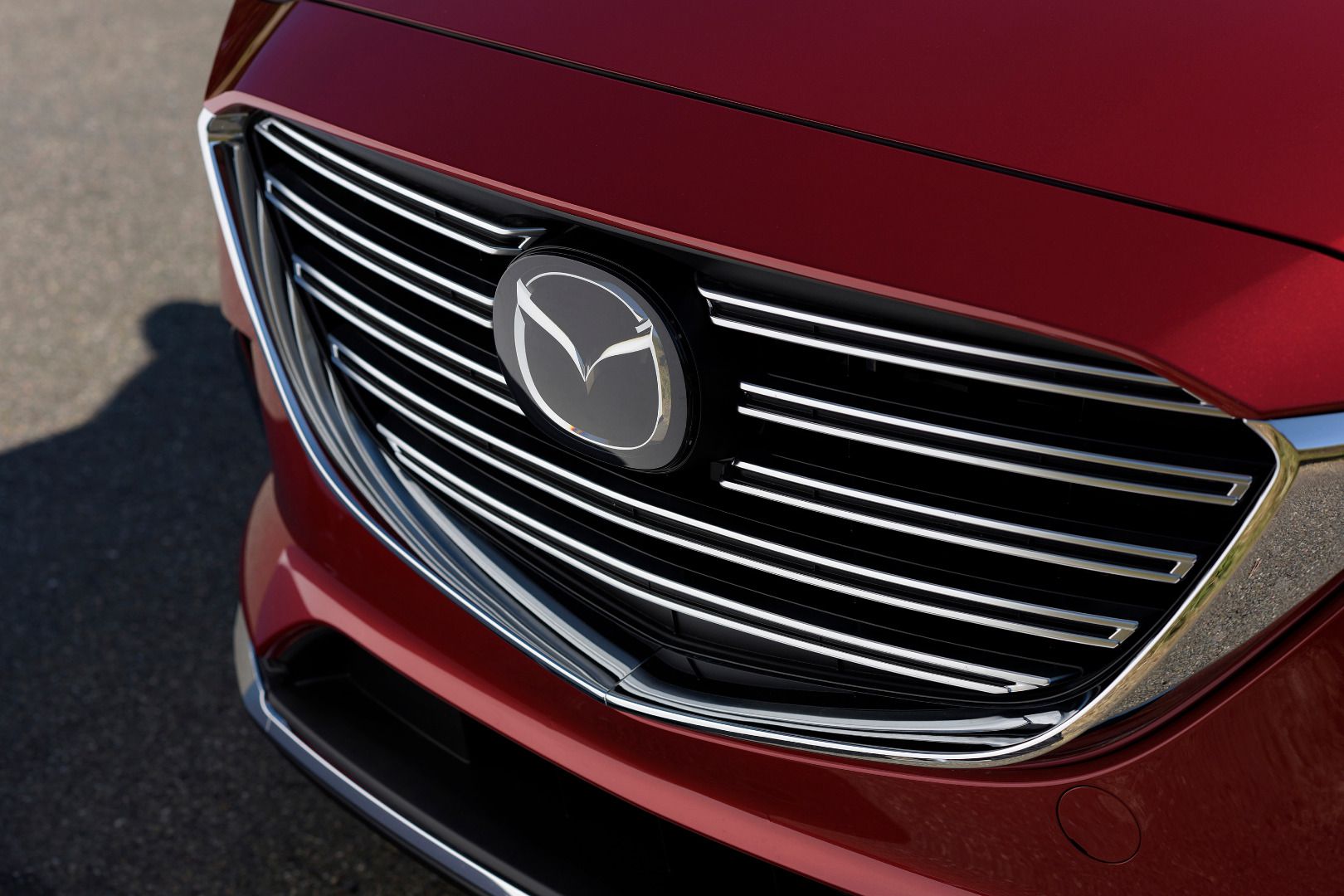
2016 Mazda CX 9 frontgrille ・ Photo by Mazda
Through October 2015, Mazda was the 17th-best-selling brand in the United States, up one slot from its 2015 and 2014 final positions. Headquartered in Hiroshima, Japan, Mazda Motor Corporation has manufacturing facilities in 11 countries. Mazda North American Operations has been headquartered in Irvine, California since 1997, where the U.S. distributor, Mazda Motor of America, Inc., is also based. Masahiro Moro is President and CEO of MNAO, and Managing Executive Officer of MMA.
The corporate ethos includes this statement: “Cornerstone of Mazda’s car-making philosophy: We first define our ideal, then work tirelessly to achieve it. We never compromise. And we never stop challenging.”
2017 Mazda Mazda3
Mazda3 traces its roots back to 1963. Known variously as “Familia,” “323,” “GLC (Great Little Car)” and “Protégé," the subcompact developed through eight generations. In 2004, Mazda3 replaced the Protégé in the U.S., and is now in the middle of its third generation (2014–present). Mazda3 competes with offerings from nearly every brand on the market, trailing behind the Toyota Corolla, Honda Civic, Nissan Sentra, Hyundai Elantra and Ford Focus on the sales charts.
Mazda3 is a subcompact car, offered in 4-door (sedan) and 5-door (hatchback) configurations. Four trim levels of Mazda3 are available: Sport (4-door, $18,895/5-door, $20,145); Touring (4-door, $21,495/5-door, $22,245); Touring 2.5 (5-door, $23,445); and Grand Touring (4-door, $24,195 /5-door, $24,945). Choose a 6-speed manual transmission, and you can knock $1,050 off of your Mazda3’s price (except on 5-door Touring, which is only available with an automatic). Sport and Touring models get a 2.0-liter SKYACTIV engine, while Touring 2.5 and Grand Touring come with a 2.5-liter engine. Fuel economy ranges from 25 MPG city/34 MPG highway/29 MPG combined to 28 MPG city/37 MPG highway/32 MPG combined, depending on configuration.

Photo by Mazda
2017 Mazda Mazda6
Another car with deep roots at Mazda, the Mazda6 is the descendant of the Capella (1970–2002), later known as the 616 and 626. Capella’s platform also supported the unfortunately named Ford Probe (1989–1997). Mazda6 has been produced through three generations, 2002–2007, 2008–2012 and 2013–present. It received a facelift for 2015, and gets a few interior, technology and packaging tweaks for 2017. All models now come with G-Vectoring Control, new exterior mirrors, a new steering wheel design, new seat back pocket design and enhanced sound insulation.
Mazda6 comes in three trim levels: Sport ($22,995); Touring ($25,245); and Grand Touring ($30,695). A 6-speed manual transmission is available at no cost on Sport and Touring. Otherwise, all Mazda6 sedans get a 6-speed automatic transmission and a 2.5-liter SKYACTIV 4-cylinder gasoline engine. The EPA estimates that Mazda6 can achieve 26 MPG city/35 MPG highway/29 combined with the automatic, 24/34/28 with the manual transmission. Optional i-Elloop regenerative braking is available on Grand Touring, and adds additional efficiency.

Photo by Mazda
2017 Mazda MX-5 Miata
MX-5 Miata is Mazda’s current halo vehicle. Over 1,000,000 examples of MX-5 have been built since its debut as a 1990 model, making it the most popular roadster in history. Through four generations, the formula has remained constant: Two seats, convertible top (either hard or soft), front-engine/rear-drive, light weight, modest yet adequate power and supremely balanced handling and performance. MX-5 is as comfortable on the racetrack as it is on a daily commute. The latest generation debuted as a 2016 model, and we expect it to continue into 2017 with few changes.
For 2016, MX-5 came in three trim levels: Sport ($26,395); Club ($29,330); and Grand Touring ($30,065), with either a 6-speed automatic or 6-speed manual transmission. A 155-hp, 2.0-liter SKYACTIV 4-cylinder engine drives the rear wheels, and the EPA rates MX-5 at 27 MPG city/34 MPG highway/30 MPG combined with the manual transmission, and 27 MPG city/36 MPG highway/30 MPG combined with the automatic.
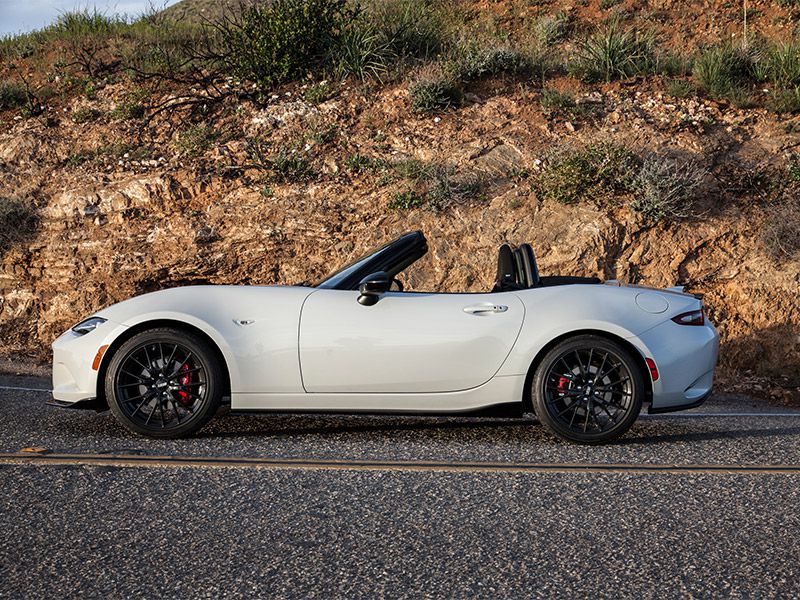
2017 Mazda MX-5 RF
New for 2017, Mazda has added the MX-5 Miata RF to its lineup. Mechanically the same as the MX-5 Miata, the RF (“Retractable Fastback”) features a new hardtop. The passenger covering retracts into the cargo area, leaving a targa-like open cockpit with a fixed rear portion and glass. The RF will be offered alongside the traditional soft top Miata.
Pricing for the special Launch Edition of the MX-5 RF starts at $33,850. There will be Club and Grand Touring models for 2017 as well, starting at $31,555 and $32,620, respectively. The initial allocation of 1,000 Launch Edition MX-5 Miata RF models sold out within eight days on offer, with 67 percent of customers choosing manual transmission models.
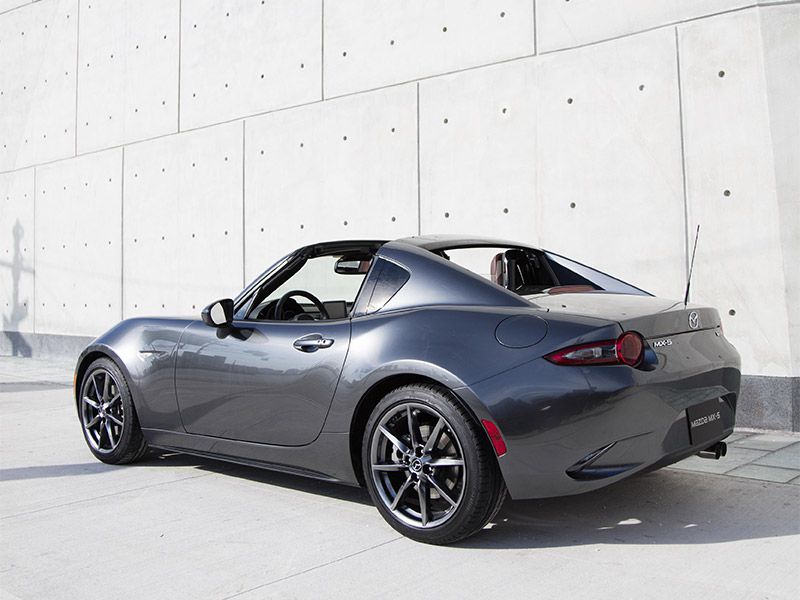
Photo by Mazda
2017 Mazda CX-3
Based on the same platform as the outgoing Mazda2, CX-3 is Mazda’s newest and smallest crossover vehicle to date. Playing in the newly competitive subcompact crossover SUV segment, CX-3 goes up against the Honda HR-V, Nissan Juke, FIAT 500X, Jeep Renegade, Buick Encore and Chevrolet Trax.
2017 CX-3 returns basically unchanged since its debut as a 2016 model. It is available in three trim levels: Sport ($19,960), Touring ($21,960), and Grand Touring ($24,990), with either front-wheel drive or all-wheel drive (add $1,250). A 146-hp version of the SKYACTIV G 2.0-liter engine powers the CX-3. Front-wheel drive versions are rated to achieve 29 MPG city/35 MPG highway/31 MPG combined, while all-wheel drive models get rated at 27 MPG city/32 MPG highway/29 MPG combined.
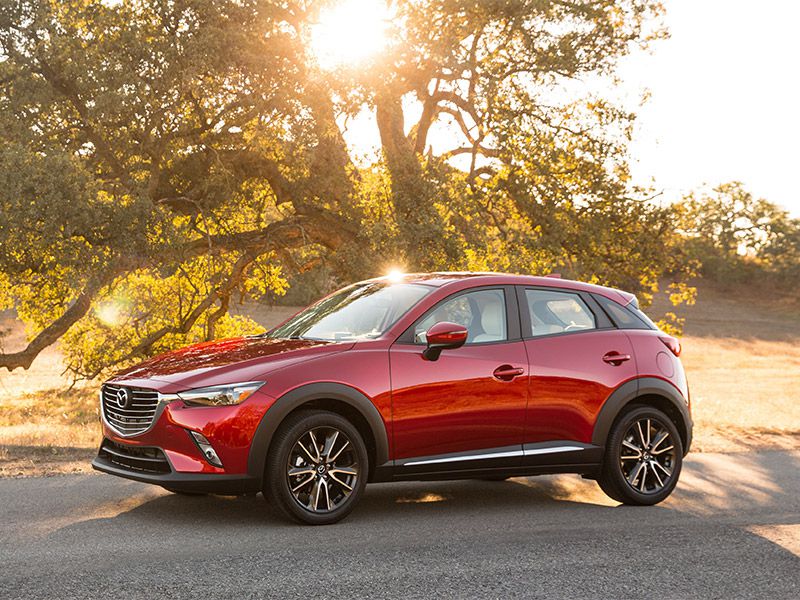
2017 Mazda CX-5
CX-5 has been a hot seller since its debut as a 2013 model, with sales increasing with each successive model year to over 111,000 sold in 2015. A modest makeover in the middle of the 2016 model year (deemed 2016.5 by Mazda) tweaked styling and packaging, and introduced available LED headlights for the first time on Touring and Grand Touring models.
We expect 2017 CX-5 to return in the same form as the 2016.5 model, which was available in three trim levels: Sport ($24,895), Touring ($26,515), and Grand Touring ($29,870). Only the Sport came with the option of a 6-speed manual transmission (a savings of $1,800), while the 6-speed automatic is standard on all models. A choice of front-wheel drive or all-wheel drive (add $1,300) is available with the automatic. Fuel economy estimates range from 24 MPG city/36 MPG highway/29 combined to 26 MPG city/35 MPG highway/29 combined, depending on configuration.
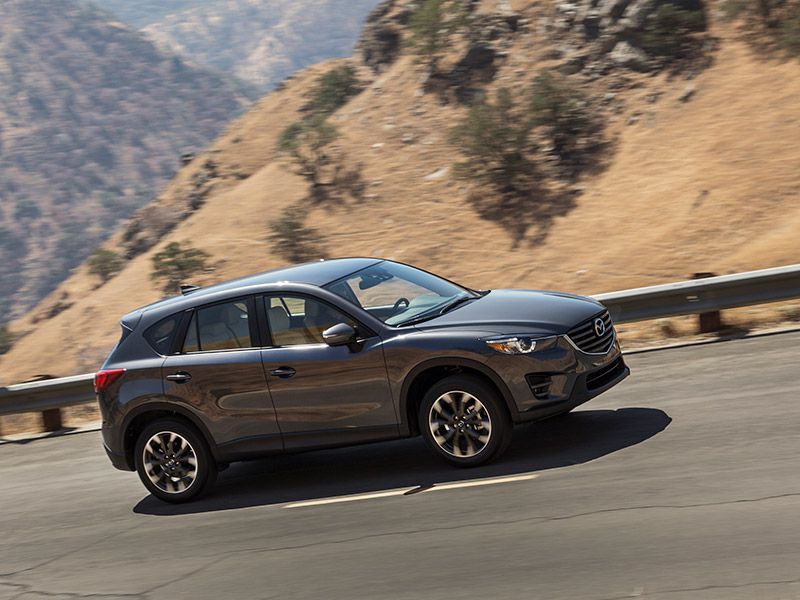
Photo by Mazda
2017 Mazda CX-9
Mazda’s CX-9 3-row crossover vehicle is the largest vehicle in the current lineup, and the brand’s flagship model. CX-9 debuted as a 2006 model, and just underwent a complete makeover for the 2016 model year. In a segment that includes the Chevrolet Traverse, Buick Enclave, Honda Pilot, Toyota Highlander, Hyundai Santa Fe and bestseller Ford Explorer among others, CX-9 has some well-established competition to deal with.
Since the new CX-9 debuted so recently, we expect the 2017 model to return with few changes from 2016. Four trim levels of CX-9 were available for 2016: Sport ($31,520 FWD/$33,320 AWD), Touring ($35,970 FWD/$37,770 AWD), Grand Touring ($40,170 FWD/$41,970 AWD), and the new Signature ($44,015 AWD only). All CX-9 models come with a 250 hp 2.5-liter SKYACTIV G turbocharged 4-cylinder engine and 6-speed automatic transmission. Front-wheel drive CX-9 models get rated at 22 MPG city/28 MPG highway/25 MPG combined, while all-wheel drive examples carry a rating of 21 MPG city/27 MPG highway/23 MPG combined.
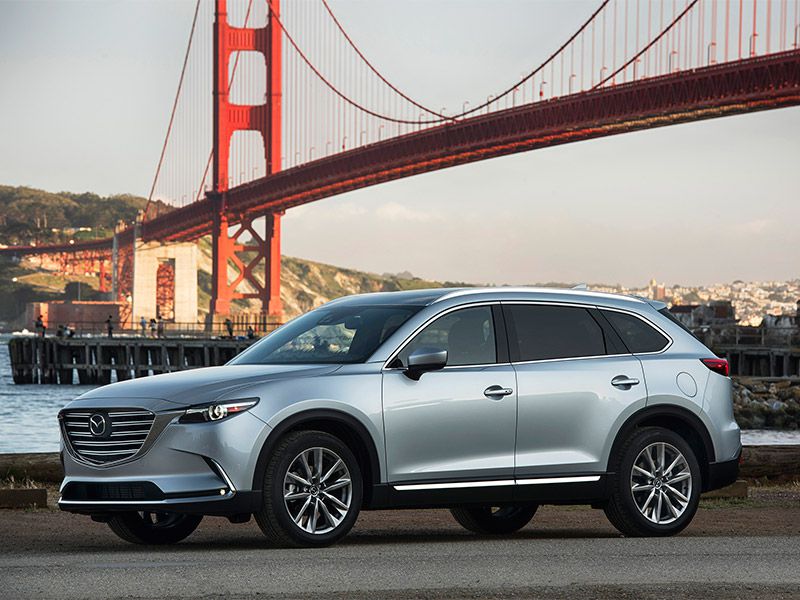
Photo by Mazda
Future and Concept Vehicles
Automotive designers frequently create concept vehicles to guide their next generation of production vehicles. Mazda, in particular, has been quite public with their concept vehicles, revealing them at auto shows as a tantalizing hint of the lineup’s future direction. Over the years, these concept vehicles have been fairly accurate indications of what would come, which isn’t always the case with concept vehicles in general. Notable Mazda concept vehicles of the recent past include MX-Crossport, Nagare, Minagi, Takeri and Shinari. A great gallery of Mazda concept cars can be found on the Mazda USA website here. The latest concept cars revealed have been called Koeru and RX-Vision. Koeru refines the crossover vehicle design, while RX-Vision points toward a new rotary engine-powered sports car in the spirit of the RX-7.

Mazda History, Notable Vehicles
Mazda was founded in Hiroshima, Japan in 1920, and built its first vehicle in 1931, a 3-wheeled motorcycle called the Mazda-go. The bombing of Hiroshima in 1945 crushed Mazda, but the company rose from the ashes to resume production and exports by 1949. The Romper, a 4-wheeled light truck, followed in 1958. Mazda’s first car, the 1960 R360 Coupe, was a hit in Japan, thanks to an affordable price, low weight and high fuel efficiency. The vehicle lineup expanded through the 1960s to include a sedan, a pickup truck and a van.
1968 saw the introduction of Mazda’s first rotary engine-equipped sports car, the Cosmo Sport. A series of rotary engine-powered cars would follow, including Capella (RX-2), Savanna (RX-3), RX-7 and RX-8. RX-8 (2004–2011) was the last rotary engine Mazda sold in the United States.
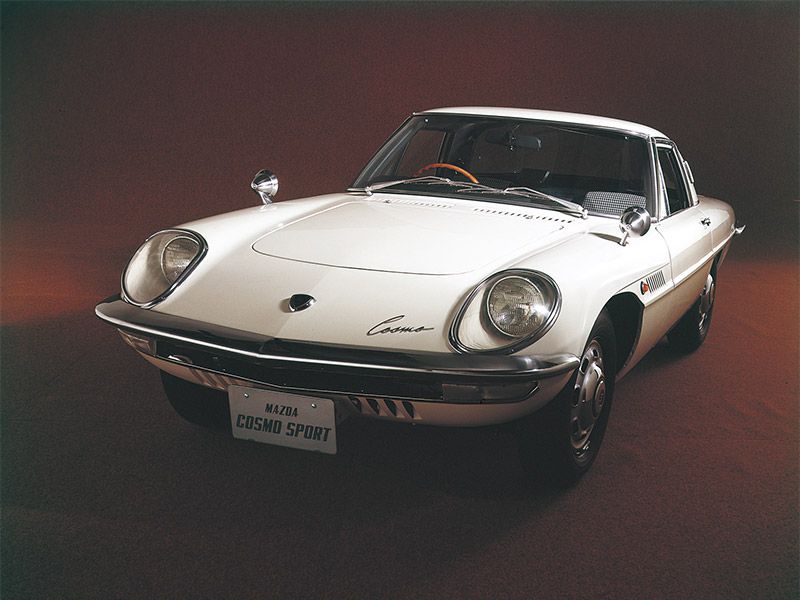
Photo by Mazda